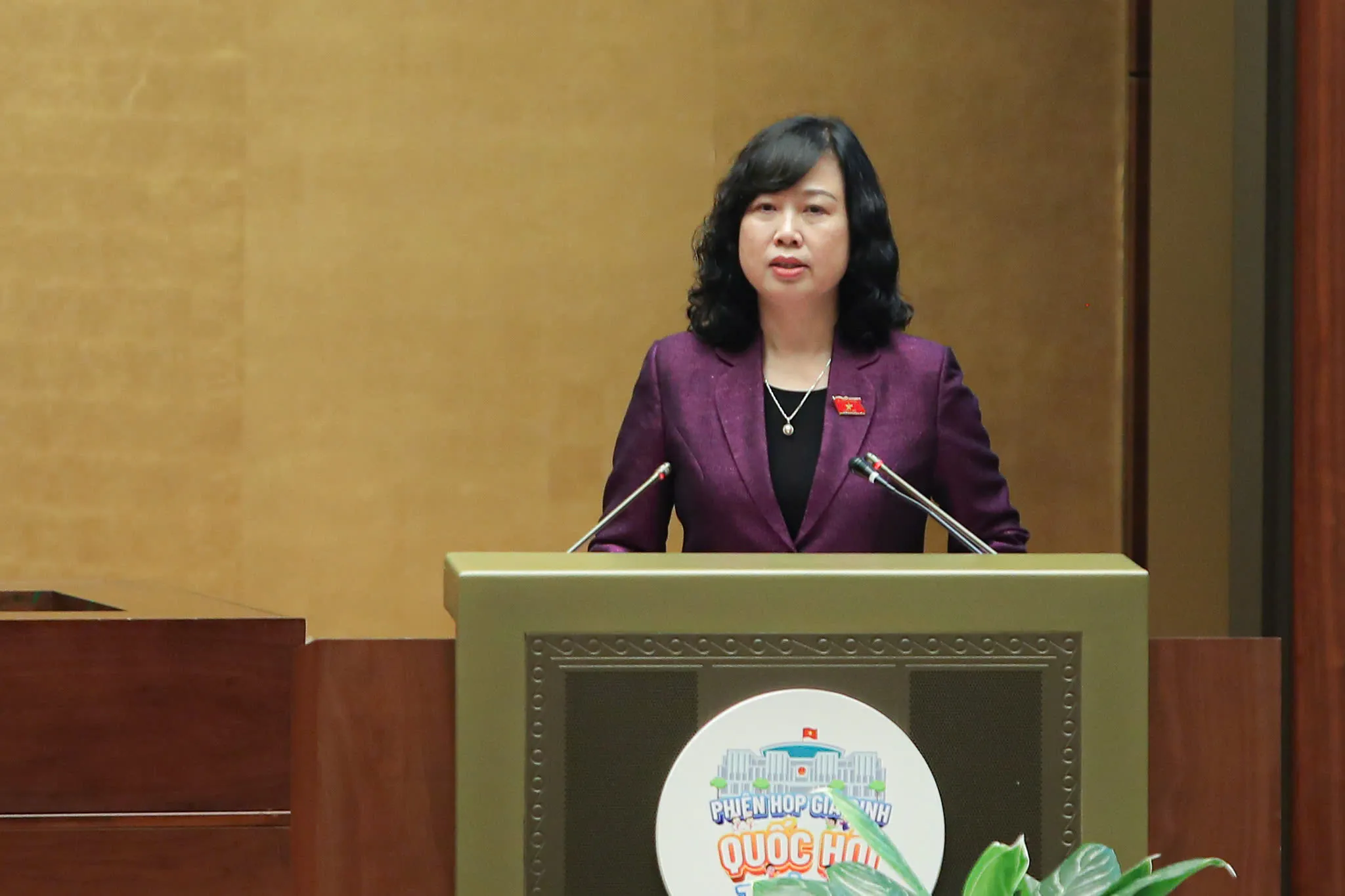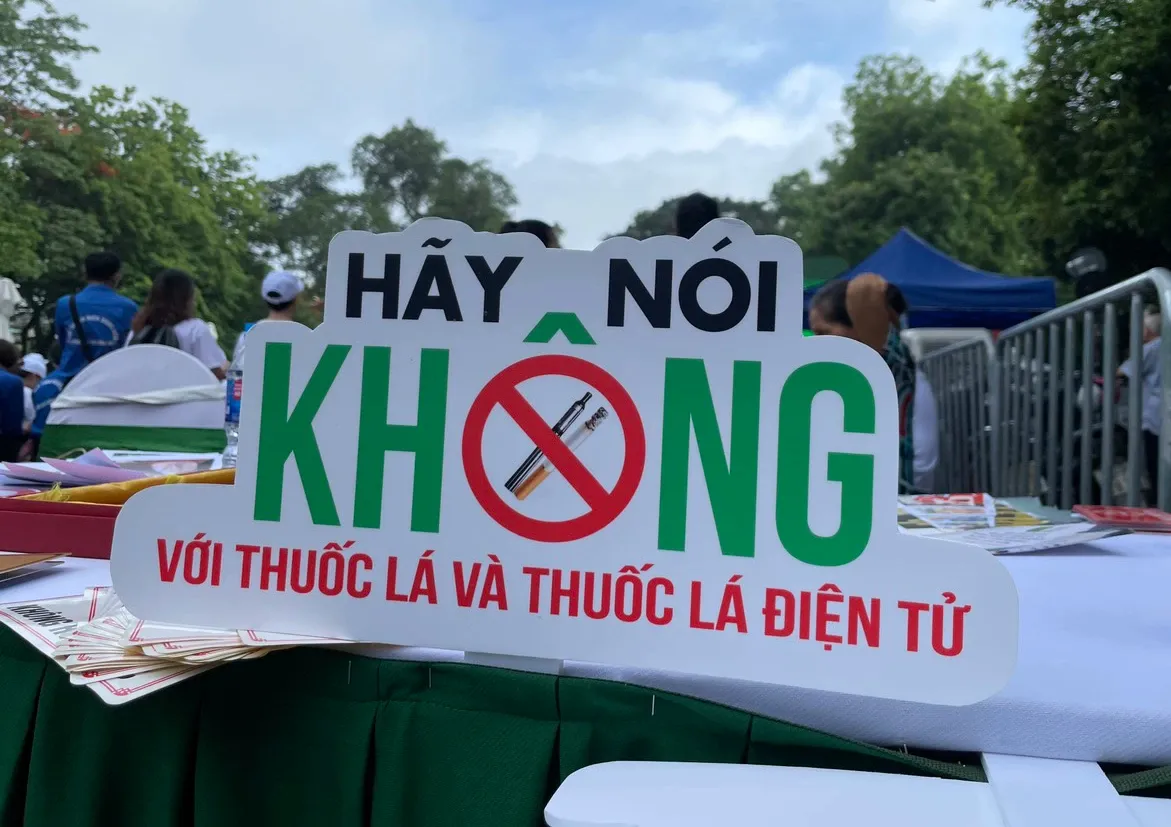Vietnam’s Minister of Health, Dao Hong Lan, has submitted a report to the National Assembly deputies regarding several issues raised during the 8th session’s question-and-answer session. Among these, tobacco control, particularly concerning new types of tobacco and increasing tobacco taxes, has garnered significant attention.
Combating the harms of tobacco and stimulants, especially within educational environments, remains a major challenge. The Law on Prevention and Control of Tobacco Harms, enacted by the National Assembly in 2012, marked a significant step forward and was highly praised by the WHO. However, there are still unresolved issues that need addressing to protect the public from the harms caused by tobacco.
Current Status of Tobacco Use and Prevention Efforts
A 10-year review report on the implementation of the Law on Prevention and Control of Tobacco Harms shows that the rate of regular cigarette use among adult men has decreased by an average of 0.5% per year (from 47.4% in 2010 to 38.9% in 2023). The rate of regular cigarette smoking among adolescents has also decreased, specifically in the 13-17 age group from 5.36% in 2013 to 2.78% in 2019; and in the 13-15 age group from 2.5% in 2014 to 1.9% in 2022. Simultaneously, exposure to secondhand smoke has also significantly decreased in households, public places, and workplaces.

These results indicate that efforts in preventing and controlling tobacco harms have yielded certain positive outcomes. However, many difficulties and challenges remain, especially regarding new tobacco products and the enforcement of legal regulations.
Tobacco Tax in Vietnam Remains Too Low
One of the issues raised by Minister Dao Hong Lan is that Vietnam’s tobacco tax is still very low. According to the Law on Special Consumption Tax, the special consumption tax rate for tobacco is 75% based on percentage, and the taxable price is the ex-factory price. The tobacco tax rate in the retail price in our country accounts for only 38.8%.
This rate is lower than the average of middle-income countries, which is 59% of the retail price, half of most ASEAN countries such as Thailand at 78.6%, Singapore at 67.1%, Indonesia at 62.3% of the retail price, and much lower than the WHO recommendation of 70% – 75% of the retail price.
Low tobacco taxes reduce the effectiveness of tobacco harm prevention measures, making tobacco more accessible to consumers, especially young people.
E-cigarettes, Heated Tobacco Products: Potential Risks
Regarding new tobacco products (e-cigarettes, heated tobacco products), the Ministry of Health recognizes these as products that cause serious harms to health, economy, society, and the living environment, directly affecting adolescents and young adults. The Ministry of Health, in coordination with the Ministry of Education and Training, the Ministry of Information and Communications, and other agencies and localities, has directed the implementation of numerous communication solutions to prevent the harms of new tobacco products.

Currently, there is no legal mechanism to manage e-cigarettes and heated tobacco products. The Law on Prevention and Control of Tobacco Harms does not define “E-cigarettes” or “Heated Tobacco Products”; there are no regulations on accessories and accompanying devices when using these products; and no agency is assigned to regulate quality standards.
The Minister of Health stated that e-cigarettes and heated tobacco products have been warned by the WHO and many health experts as harmful, addictive, and detrimental to human health and life, especially for young people. The WHO has issued two official documents to the Government and the Ministry of Health requesting a ban on these products in Vietnam.
According to assessments by the Health Economics Association, the economic damage from smoking is roughly 5 times greater than the tax revenue generated. Particularly, the addictive nature and the increasingly common and sophisticated mixing of drugs have been warned by the Ministry of Public Security.
New tobacco products are attractive and appealing to young people as they are associated with a trendy lifestyle, and come in diverse and attractive designs and flavors (bear-shaped, milk carton-shaped, watch-shaped, etc.). E-cigarettes are very cheap, some can be bought for just a few tens of thousands of Vietnamese Dong, making it easy for young people to own these products.
E-cigarettes and heated tobacco products are very easy to find, and transactions are quick and convenient, occurring on social media or at retail locations, even near schools.
Marketing and advertising information from tobacco companies mislead users by suggesting benefits such as smoking cessation aids, reduced exposure, and harm reduction, and even using youth idols to promote these products.
Since e-cigarettes and heated tobacco products are not on the list of prohibited investment and business sectors, or prohibited acts of manufacturing, trading, importing, and advertising these products are not included in the Law on Prevention and Control of Tobacco Harms, when violations are detected, functional agencies of the Ministry of Industry and Trade mainly handle acts of trading smuggled goods, without clear origin, and without invoices or documents.
Functional agencies of the Ministry of Public Security take action if they detect the mixing, soaking, or injecting of drugs and banned substances in e-cigarettes and heated tobacco products. Thus, timely prevention is not ensured, and penalties are not strong enough or deterrent enough.
The Ministry of Health reported that according to aggregated reports from nearly 700 hospitals and medical facilities, there were 1,224 hospital admissions due to the use of new tobacco products in 2023 alone.
Solutions and Recommendations
To address the existing issues and improve the effectiveness of tobacco harm prevention and control, the Ministry of Health proposes the following solutions:
- Amend and supplement the Law on Prevention and Control of Tobacco Harms: Submit a resolution to the National Assembly on prohibiting the production, business, import, and advertising of e-cigarettes, heated tobacco products, and other new tobacco products; specifically regulate the management and prevention of harms from new tobacco products; and define the responsibilities of inter-sectoral ministries, agencies, and the community in strengthening the effectiveness of enforcing the ban to promptly prevent the harms caused by new tobacco products.
- Develop a roadmap to increase special consumption tax: Ensure that by 2030, the tax rate reaches the proportion of retail price recommended by the WHO to achieve the goal of reducing tobacco use rates according to the national strategy on prevention and control of tobacco harms.
- Continue to implement professional measures: Implement smoke-free environments; integrate tobacco cessation counseling into national health programs for the prevention and control of non-communicable diseases, chronic obstructive pulmonary disease, public health programs, and professional activities of medical facilities nationwide; develop tobacco cessation counseling services, etc.
- Strengthen information and communication: About the harms of tobacco products, including new tobacco products, to the community, especially to adolescents and young adults. Develop communication materials and organize communication activities to raise awareness among all levels of government, law enforcement groups, and the public.
- Strengthen inspection and supervision: Of the implementation of the Law on Prevention and Control of Tobacco Harms in educational institutions, schools, and educational centers.
Conclusion
Tobacco harm prevention and control is a long-term process that requires the joint efforts of the entire society. Increasing tobacco taxes, strictly controlling new tobacco products, and implementing synchronized solutions are key factors to protect public health and minimize the burden of disease caused by tobacco.